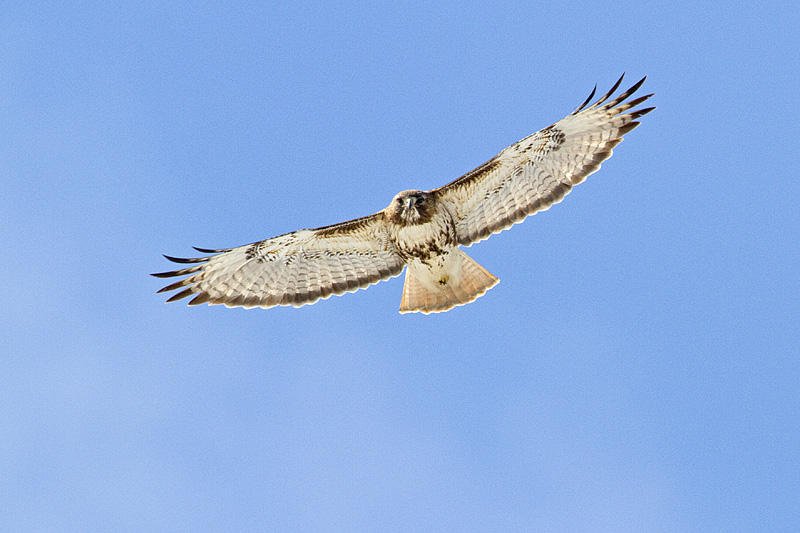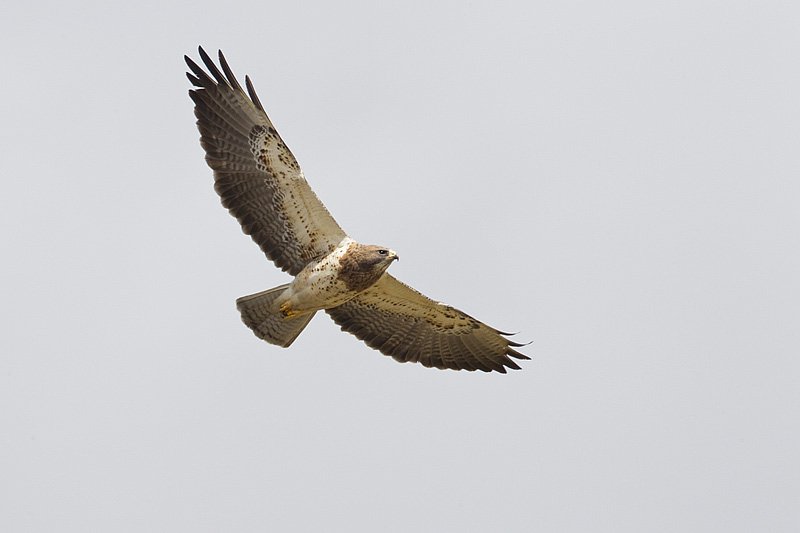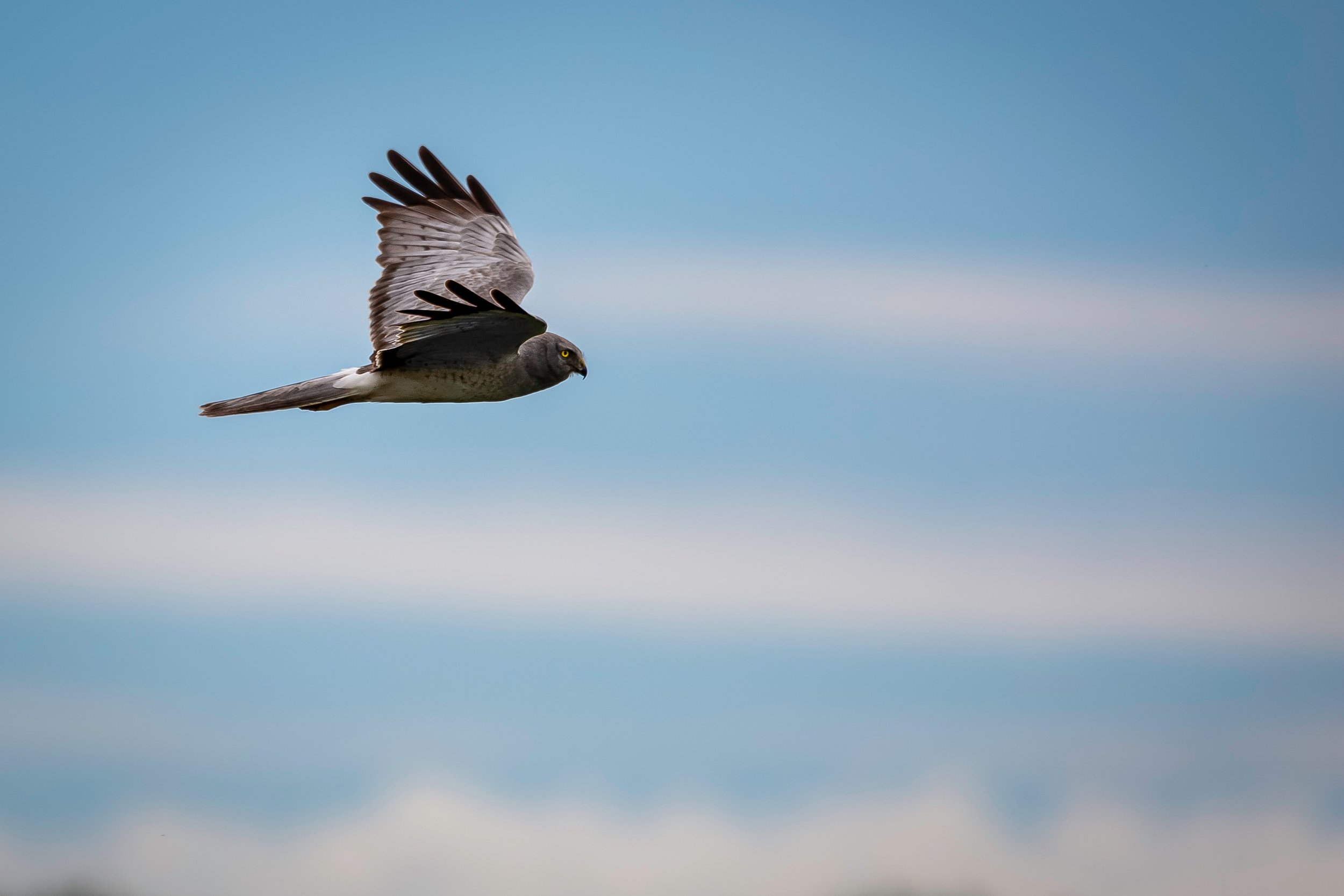A hawk soaring overhead is a classic sight in the prairies in summer. But there are 9 species of hawks in Alberta, so how do you know which one are you looking at? With most wildlife identification, habitat and region can go a long way in terms of helping to determine what species you are looking at. In this Fun Facts blog, we are going to learn how to identify three hawks that you are most likely to see if you are in a field or open meadow in the Edmonton region.
Red-tailed hawk (Buteo jamaicensis)
Red-tailed hawks are the most common hawk during the summer months. They can be found anywhere with large open spaces and places to perch, making them common around fields, meadows, and even frequently within the city. They are widespread across North America. Watch for them soaring in slow circles overhead, or perched on fence posts and light poles.
Red-tailed hawk. Photo by Gerald Romanchuk
Red-tailed hawk. Photo by Gerald Romanchuk
They are aptly named for their signature reddish tail, which is a clear diagnostic ID feature, even when seen from a distance. In flight, Red-tailed hawks have a dark edge around their wings, black wing tips, and a dark band across their belly. They can have highly variable plumage and a number of distinct “morphs” but the Western morph is the most common.
The red-tailed hawk’s diet is varied, consisting of small mammals (like mice, voles, and ground squirrels,) birds, and reptiles (like garter snakes.)
Swainson’s hawk (Buteo swainsoni)
To identify a Swainson’s hawk, look for a very broad dark wing edge, as well as a darkish head and neck, creating a hooded appearance. They are widespread all across the United States, and south-western Canada. They can be found soaring over open grasslands and agricultural fields, or perched on fenceposts or trees.
Swainson’s hawk. Photo by Gerald Romanchuk.
Swainson’s hawk. Photo by Gerald Romanchuk.
During the breeding season, Swainson’s hawks prey on rodents, rabbits, small birds, and snakes, which they feed to their young. Interestingly, outside of the breeding season, they switch their diet to mostly insects such as grasshoppers, beetles, and dragonflies.
* Both Swainson’s and Red-tailed hawks have a variety of plumage variations, or “morphs,” which can make IDs a little more challenging.
Northern harrier (Circus hudsonius)
Sometimes a bird is distinctive just by its flight pattern, even from a distance away. The northern harrier is one of those birds, a slim and streamlined hawk that can been seen flying characteristically low over fields with its wings often held in a recognizable V position. Males are a pale grey with black wingtips and trailing edge. Females are brown-and-white streaked, and both sexes have a noticeable white rump patch.
Northern harrier. Photo by Gerald Romanchuk
Harriers feed on similar prey as other hawks - small mammals and birds, frogs, and reptiles. They are also known by the common name “marsh hawk,” which refers to the fact that they are frequently found in marshy meadows.
Although learning hawk identification can seem intimidating at first, knowing which species are likely to be seen in the surrounding habitat can really help to narrow down what you are looking at. Keep your eyes open for these hawks next time you are at one of EALT lands that have open fields and meadows, such as Golden Ranches, Bunchberry Meadows, Smith Blackburn Homestead, or JBJ McDonald.
Looking for more interesting facts? Subscribe to our Nature Notes newsletter for more blog posts.
Thanks for reading!






